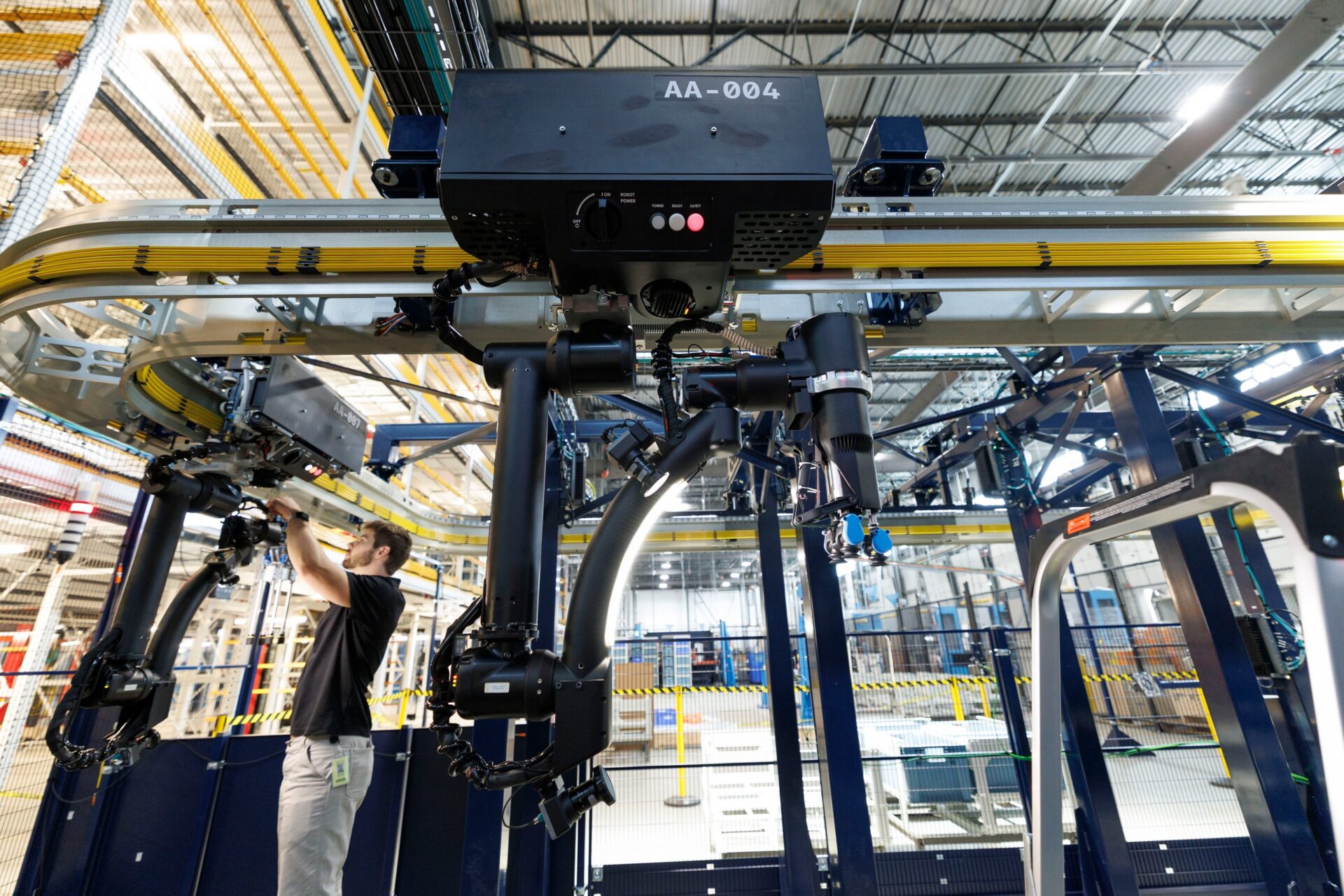My first online purchase was a book from Amazon in 1996, a year after the online store opened for business. It took a week to arrive.
I was thrilled. Shopping for books from the comfort of home felt magical. I could browse Amazon’s vast collection of books and have one delivered right to my doorstep.
Over the years, Amazon has transformed into a global e-commerce behemoth. Currently, it lists over 600 million products, from household items and electronics to fashion and beauty, electronics and others.
To handle this vast catalogue and meet ever-increasing customer demands for speed, delivery has also greatly improved, with many same-day deliveries now fulfilled. The secret to this success is automation and robotics.

Amazon currently employs one million robots across its warehouses and fulfilment centres and continually innovating on more automated systems.
Ahead of the biggest shopping season at year-end, it recently showcased new robotics innovations that will quicken pick, stow and package parcels at an event called Delivering the Future in the Bay Area in California. These innovations, Amazon executives told reporters earlier this month, would amplify workers’ performance and speed delivery to customers.
Called Blue Jay and Project Eluna, the AI-infused robotic systems reduce repetitive tasks, improve safety, and boost productivity and get parcels to customers faster.
Blue Jay is a robotic system that coordinates multiple robotic arms while Project Eluna is an agentic AI model helping operators make more informed decisions.
Ty Brady, Amazon’s robotics chief technology officer, said the company’s goal is to use the robotic innovations to eliminate the menial, the mundane and the repetitive, all of which will amplify what people do best – reasoning, judgement and common sense.
By automating routine tasks, he added, AI frees employees to focus on higher-value work. The goal, he told the media, is to make technology the most practical and the most powerful tool it can be so that the work becomes safer, smarter and more rewarding.
He emphasised that designing machines with real utility, ones that improve safety and increase efficiency, can create new types of technical jobs in the process. Amazon also provides employees with training courses such as mechatronics.
Amazon is not replacing people with robots, he stressed. People can perceive and understand the environment. “We use robotics to augment the human brain.”
Brady said the e-commerce giant was adding another 250,000 seasonal jobs for the upcoming holiday shopping season.
This, however, would not detract from news last month that the company was preparing to cut up to 30,000 corporate jobs to pare expenses and compensate for over-hiring during the peak demand of the pandemic. Amazon is one of the biggest employers in the United States, with 1.55 million employees. Only 10 per cent are corporate employees.
Robotic innovations

Blue Jay performs multiple tasks with its robotic arms which are suspended from a conveyor belt-like track. The arms are tipped with suction-cup devices that allow them to grab and sort items of varying shapes and sizes.
With suction-cup devices, the arms can operate in smaller spaces unlike pincer-like robotic arms which limit their ability to operate in confined spaces.
The system is already being tested in Amazon’s facility in South Carolina, where it is able to pick, stow and consolidate about 75 per cent of all the various items the company stores, said a media release.
Over time, it will serve as a core technology to speed up deliveries at low cost. For employees, it means smarter tools and even safer work, added the release.
Project Eluna is an AI model that assists operations teams, helping to identify safety issues before they happen. Trained on Amazon warehouse historical and real-time data, it can anticipate bottlenecks and keep operations running smoothly.
It can act autonomously, reasoning through complex operational situations and recommending actions to operators.
It will be trialled at a fulfilment centre in Tennessee where it will assist operators during the Christmas holiday season, working initially on optimising sorting processes.
Operators can ask questions like “where should we shift people to avoid a bottleneck” and receive clear data-backed recommendations, according to Amazon.
The company also unveiled a pair of augmented reality-like glasses for delivery drivers for hands-free work. The heads-up display overlaid with information reduces the need to look between the phone, the package and surrounding area. This makes for a safer work experience.
Equipped with AI, sensors and cameras which provide advanced computer vision processing, the glasses can scan packages quickly for drivers to pick up and deliver. It can also guide drivers to the exact delivery location with turn-by-turn directions and warn them of hazards.
Embedded in the delivery vest is a small controller that contains operational controls, swappable battery ensuring all-day use and an emergency button. The glasses also support prescription lenses along with transitional lenses that automatically adjust to light.
This wearable technology was developed with inputs from the drivers. Many of them tested early versions of the glasses and provided crucial feedback, said a media statement.
From its early days of founding, Amazon had embarked on automation to ensure customers receive their parcels quickly. The turning point came in 2012 when it acquired Kiva Systems for US$775 million which laid the foundation for Amazon Robotics and revolutionised how warehouses and fulfilment centres operate.




